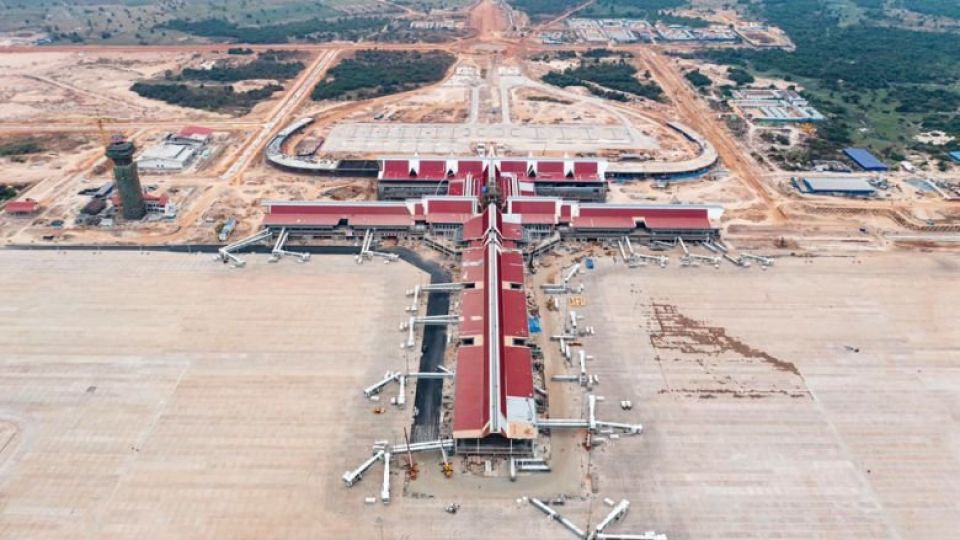March 9, 2023
PHNOM PENH – After the new Siem Reap-Angkor International Airport (SAI) opens in October, the existing complex serving the northwestern province will be “completely closed”, according to State Secretariat of Civil Aviation (SSCA) spokesman Sin Chansereyvutha.
SAI developer Angkor International Airport Investment (Cambodia) Co Ltd (AIAI) last month affirmed its commitment to completing the main work on the first of the three phases of the 4E-category airport by end-March, and opening the establishment by October.
The project broke ground on March 15, 2020 on a 700.06ha site in Sotr Nikum district’s Ta Yek commune east of Siem Reap town.
Chansereyvutha told The Post that a round of internal test flights is scheduled for SAI in June.
However, in response to queries regarding what would become of the old 4D-category airport, its facilities and site, he merely responded: “That will be the decision of the Royal Government.”
Although the main work on the first phase of SAI was reportedly 63 per cent complete at end-2022, that rate has since risen to 86 per cent, according to Prime Minister Hun Sen’s personal assistant Eang Sophalleth – who also confirmed the June test flights – on March 6.
Sophalleth revealed this following a meeting between the premier and Liu Minglin, president and vice-chairman of the Chinese state-owned Yunnan Investment Group, an AIAI affiliate that is also behind SAI, at the Peach Palace in Phnom Penh.
Liu briefed the premier on provisional plans concerning a broad promotion campaign for SAI to attract tourists and investors to the Kingdom, as well as on his company’s intent to invest in solar energy in Siem Reap province, Sophalleth recounted, adding that Hun Sen welcomed both.
The premier encouraged Yunnan Investment Group to fast-track construction work on the airport, albeit while making sure that the project meets all requisite standards before flights begin. He also recommended setting up a solar panel factory for domestic and overseas markets.
Chansereyvutha added that SAI is being built at a better site than the current airport – the latter being located more than 40km to the west, at 5km from Angkor Wat – incorporating social and environmental considerations, which he said would mean “no more” major issues involving UNESCO – the UN’s cultural agency.
The airport is designed so that noise will not significantly affect the lives or businesses of people in the surrounding areas, he assured.
He stated that the airport will be able to accommodate long-haul flights, with its terminal capable of serving between seven and 10 million passengers per year, and its cargo and warehousing facilities boasting an annual handling capacity of up to 100,000 tonnes per year.
Earlier reports have claimed that the airport will be able to receive about seven million passengers per year initially, 10 million by 2030, and 20 million by 2050 – corresponding to the three phases of the project. Similarly, annual cargo capacity is expected to rise from 10,000 tonnes initially to 60,000 tonnes by 2050.
For reference, in the “4E” code designation, the number “4” means that the airport’s runway is longer than 1,800m and the letter “E” signifies that the runway is designed for aircraft with a wingspan of up to but not including 65m, and landing gear where the outside edges of the outermost wheels are less than 14m apart.
The criteria are the same for a 4D-category airport – such as the existing one in Siem Reap town – except that aircraft must have a wingspan of up to but not including 52m.


